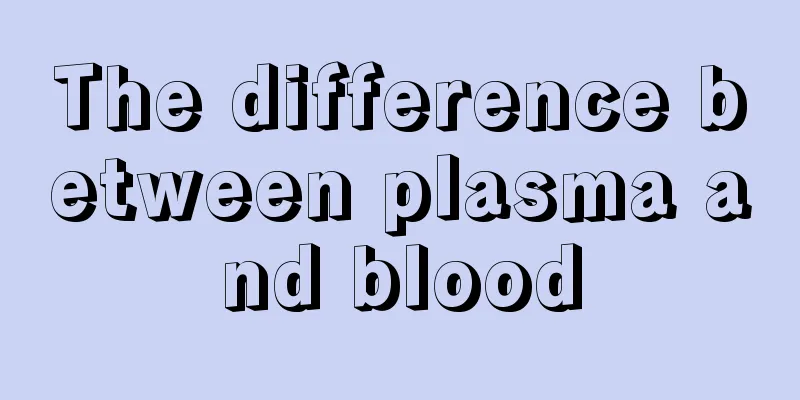The difference between plasma and blood

|
Plasma and blood are two important components of the human body. Although the two look very similar, there are actually huge differences between them. Generally speaking, blood includes plasma, which is an important component of blood. In addition, there are certain differences in their specific functions. Below, we will introduce you to the relevant knowledge about plasma and blood in detail. 1. What is plasma? The main function of plasma is to carry blood cells, transport substances needed to maintain human life activities and waste produced in the body, etc. Plasma is equivalent to the intercellular matrix of connective tissue. Plasma is an important component of blood and is a light yellow liquid (because it contains bilirubin). Among the chemical components of plasma, water accounts for 90~92%, and the other 10% is mainly solute plasma protein. It also contains electrolytes, nutrients, enzymes, hormones, cholesterol and other important components. Plasma protein is a general term for a variety of proteins, which can be divided into three categories: albumin, globulin and fibrinogen by the salting-out method. 2. What is blood? Blood is a red, opaque, viscous fluid that flows in human blood vessels and heart. Blood is composed of plasma and blood cells. One liter of plasma contains 900-910 grams of water, 65-85 grams of protein and 20 grams of low molecular substances. Low molecular substances include a variety of electrolytes and organic compounds. Blood cells include three types of cells: red blood cells, white blood cells and platelets. The average lifespan of red blood cells is 120 days, that of white blood cells is 9-13 days, and that of platelets is 8-9 days. Generally speaking, 40 ml of blood cells age and die per person every day. At the same time, a corresponding number of cells are generated. The functions of blood include blood cell function and plasma function. It has four functions: transportation, regulation of human body temperature, defense, and regulation of human body osmotic pressure and acid-base balance. 3. What is the difference between plasma and blood? Plasma is the part of the blood that remains after blood cells and platelets are removed. It is a translucent, pale yellow, viscous liquid that accounts for about 55-60% of the blood. Plasma contains about 92% water, and the rest is globulin, fibrinogen, enzymes, hormones and inorganic salts. When blood flows out of blood vessels, the fibrinogen in it turns into fibrin and coagulates with blood cells to form clumps, which has a hemostatic effect. The pale yellow transparent liquid remaining after removing fibrinogen from plasma is called serum, which will not coagulate. |
>>: What can’t you eat before donating plasma
Recommend
How bladder cancer spreads
After bladder cancer progresses further, it first...
Common complications after craniocerebral surgery, complication care is the most critical
Severe craniocerebral injuries require timely sur...
6 tips to help you smooth out rough hair during the rainy days
1. Wash your hair frequently to keep it fluffy Du...
How to check Helicobacter pylori?
Some of you may not know much about Helicobacter ...
What to do if you have a severe cough
Coughing is a relatively common condition, and th...
What is radiofrequency ablation? A surgical method
Radiofrequency ablation has a good therapeutic ef...
What to do if nausea and vomiting occur during radiotherapy after rectal cancer surgery
A patient with rectal cancer has spread to the pe...
Black moles must prevent the occurrence of melanoma
Black moles are a symptom that we often see on th...
Is early stage lung cancer contagious?
Is early-stage lung cancer contagious? Lung cance...
Six lifestyle habits to be healthier if you do them in reverse
Rest when tired, drink water when thirsty, and se...
Reasons for low average hemoglobin concentration
Hemoglobin concentration is an item in routine bl...
Life tips for removing freckles with zero side effects
Many people think that a small amount of freckles...
Six wrong sleeping methods make you more tired
Some people feel particularly tired when they wak...
What should patients undergoing colon cancer surgery eat
What should patients who undergo colorectal cance...
What should I do about cervical precancerous lesions? Is the chance of cervical precancerous lesions high?
The onset of cervical cancer does not happen over...









